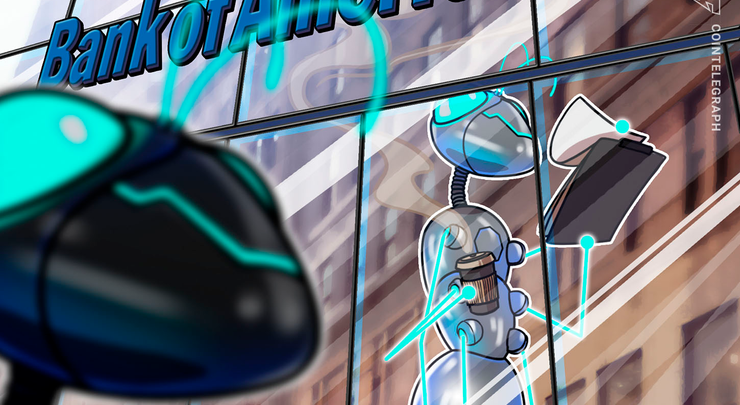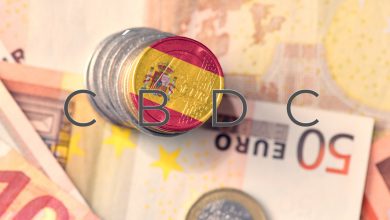
Bank of America’s Blockchain Foray: Patent Trolling or Hedging Risks?
Earlier this week, Bank of America (BofA), one the United States’ largest financial institutions, made a massive splash in the crypto sphere as the details of its recently registered patent, entitled “Real-Time Net Settlement by Distributed Ledger System” and citing the Ripple blockchain, emerged in the press. Even though the extent and exact character of the proposed system’s reliance on Ripple is impossible to determine from the filing, the community of XRP holders and supporters rejoiced.
A piquant nuance is that the XRP token itself was never mentioned in documentation, suggesting a curious “Ripple without XRP” scheme that the patent’s authors elected to employ. This, in turn, led to speculations that patenting such an architecture would automatically urge all other banks to use “Ripple with XRP” — which, of course, is only valid in a world where Ripple has become a dominant infrastructure for interbank payments. In order to make sense of what the news means for the crypto industry as it currently is, revisiting a long record of BofA’s use of blockchain patents is a necessary first step.
The BofA corporate communications team refused to give further comment on the situation upon a request from Cointelegraph.
Bank of America and blockchain: a complicated relationship
What adds even more spice to the present development is BofA’s controversial approach to blockchain-related patents, which Cointelegraph already scrutinized last fall. In brief, Bank of America has long been the global leader in terms of the raw number of registered, unexpired patents that made use of distributed ledger technology (DLT), amassing as many as 82 of them as of March 2019. However, a June 2019 report by LexisNexis PatentSight suggests that some of them may have expired, as BofA stood second behind IBM, which has 52 live blockchain patents.
Despite this formal indicator of appreciation, BofA’s top executives have been consistently making statements on the value of DLT-based solutions that were little short of dismissive. Cathy Bessant, the company’s tech and operations chief, has been the bank’s key spokesperson on blockchain matters. Speaking at the CB Insights Future of Fintech event in June 2018, she stated that Bank of America’s main reason to be active on the patent front is simply hedging potential future risks, rather than the abundance of present use cases, saying, “While we’ve not found large-scale opportunities, we want to be ahead of it, we want to be prepared.”
Michael Wuehler, an ex-BofA employee of 11 years who’s had a hand in the company’s blockchain research, went even further by tweeting in August 2018 that the bank’s blockchain patents were “meaningless other than making for press releases and public perception of innovation.” Come 2019, not much seems to have changed. In an interview with CNBC in March, Bessant expressed grave reservations about blockchain’s short-term relevance:
“I haven’t seen one [use case] that even scales beyond an individual or a small set of transactions. All of the big tech companies will come and say ‘blockchain, blockchain, blockchain.’ I say, ‘Show me the use case. You bring me the use case and I’ll try it.’”
Even thought BofA’s tech boss added that she wanted distributed ledgers to “make us better, faster, cheaper, more transparent, more, you know, all of those things,” she was ultimately bearish on the technology. Nevertheless, Bessant restated that the bank wanted to be ready for a hypothetical scenario in which blockchain lives up to the big promise. Bessant added that, while private blockchains could indeed improve some aspects of banks’ operations at some point in the future, she remained deeply skeptical of open-access, permissionless systems, where user anonymity allegedly poses unsurmountable hurdles for financial institutions to ever implement any solutions built on public blockchain networks.
This gaping discrepancy between the BofA’s staunch declared skepticism of DLT and simultaneous patent accumulation (“just in case”) could not go unnoticed and unquestioned by the crypto community. Some decentralization purists and traditional banking system’s naysayers have come to suspect that Bank of America’s approach could have more malevolent motivations than stated. For one, as analysts at the nonprofit Gini Foundation have it, the bank is bracing for the upcoming “blockchain patent war,” in which patents will serve to sabotage other blockchain platforms and stall the overall industry’s development by the means of endless litigation over emerging solutions.
The industry professionals surveyed by Cointelegraph did not quite share this alarmist sentiment, though. Will Cai, partner at the investment management firm Wilshire Phoenix, opined that the driver behind Bank of America’s blockchain strategy is more or less what it claims it is:
“Bank of America is not a patent troll. They run a financial services business with varying levels of complexity across divisions and products and like many of the legacy finance institutions, they are constantly monitoring emerging areas. The ability to identify new technologies where patents can potentially serve to protect and create value is the natural progression of any enterprise level business when dealing with a nascent technology. We see this as further mainstream adoption and a positive development for the blockchain space as a whole. That being said, institutional adoption of blockchain technology will inevitably increase competition and for some it will be ‘be careful of what you wish for.'”
Iain Wilson, an advisor to NEM Ventures, the venture capital and investments arm of the New Economic Movement (NEM) blockchain ecosystem, thinks that there are structural reasons behind banks’ struggle to find immediate use cases for blockchain tech, which was one of the major issues that BofA’s Bessant took with DLT solutions. It is possible that the big banks’ current organizational models are simply not the best fit to incorporate open-source infrastructure. Wilson observed:
“The majority of large banks have been experimenting with blockchain/DLT Technology for a number of years, as evidenced by both user surveys and IT investment budgets. Many have found that internal projects have failed to demonstrate major benefits primarily because the technology works better in a more open and mutual environment. If you examine the BoA patent application, you immediately see areas which rely on messaging between parties, counterparty verification and monitoring of real time net balances between parties. These are core valuation propositions of Blockchain/DLT technology, much of which has been open sourced. It seems unlikely that banks will be able to block innovation with patents in this sector primarily because so much is in the public domain.”
Lars Seier Christensen, chairman of the decentralized computing platform Concordium, added that it is unlikely that big banks will resort to freezing out the emerging blockchain-powered competition by means of litigation over intellectual property, in part because this would not be particularly efficient of a weapon against a largely open-source ecosystem:
“I suspect that most of the patents taken out by banks currently are defensive in nature, in other words to ensure that the banks themselves cannot be attacked for their blockchain activities. I expect that the banks will allow the industry to develop a hit-or-miss approach in a relatively unhindered environment, where through both successes and failures, the real workable use cases and solutions will be identified over time. In any case, a highly restrictive approach will not work in a distributed and decentralised ecosystem, and open-source projects are more likely to succeed than projects aggressively protected by patents.”
Bigger picture
Even if BofA and other leading financial institutions are not trying to deliberately stall the development of the blockchain sector, it is still sitting on a massive pile of patents with vague prospects of actual implementation. This, however, is not a ubiquitous pattern globally: Some nations do take full advantage of the emerging banking tech. One glaring example is South Korea, where the leading credit card firm, Shinhan Card, has recently patented a blockchain-powered transaction system with enhanced user-facing functionality beyond payments. The country’s largest foriegn exchange bank, KEB Hana Bank, has been prolific with applications for blockchain-related patents, reporting 46 filings earlier this year.
South Korea also enjoys global leadership in terms of patent grant rate. According to a fresh report by the media platform IAM, 54% of blockchain patents get registered there are granted, compared to Japan’s 17% and the United States’ 16%, with China trailing even further behind with just over 1%. At the same time, South Korea accounts for just 4% of global blockchain innovation, while the composite share of China and the U.S. approaches 84%. Ultimately, the inertia inherent to massive established financial markets precludes the kind of brisk patenting to implementation cycle that characterizes a tiny and more agile Korean market. However, the bulk of blockchain-fueled innovation occurs in those unwieldy environments, so the industry should at least strive to push them more toward the Korean mold.
Source: cointelegraph.com
View original post





